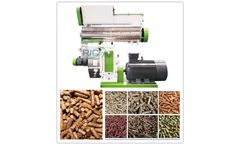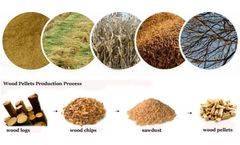Coal Combustion Articles & Analysis
33 articles found
The sulfur content of biomass pellet gas is relatively low, and the carbon dioxide launched by it is relatively low, which can be said to have actually zero discharges compared with coal combustion. Related post: biomass pellet production line ( 3) Warmth manufacturing. Biomass pellet gas made by biomass power equipment can significantly enhance the ...
Coal combustion power plant - MIR 9000, PCME STACK 602, PicoFlow, WEX India’s Ministry of Environment, Forest and Climate Change (MoEFCC) targeted significant reduction of particulate matter (PM), sulfur oxides (SOx) and nitrogen oxides (NOx) emissions from coal fired power plants. ...
ByENVEA
Biomass industrial boilers: Biomass fuel is used as the main fuel of industrial boilers to replace coal combustion and solve environmental pollution. Biomass pellet machine can solidify domestic garbage and factory waste into efficient and clean renewable energy. ...
Potential coal fires and coal-induced explosions in a coal handling system pose serious safety concerns for any industry that is using pulverized coal. Spontaneous combustion of coal in a coal handling system (coal conveyors, coal mills, ...
During the combustion of pulverized coal in boiler, coal will turn into slag and get discharged, but still some unburnt carbon, volatile matters, fly ash will go with flue gas. ...
In large boilers (Figure 1), power plants bring together air and fuel (natural gas, waste gas, oil or coal) for combustion, which creates heat. The heat boils the water, creating steam. ...
Although the emissions from biomass origin fuels combustion are considered CO2-neutral, fine particle emission is a major drawback for these fuels. ...
Along with bottom ash (BA) and flue gas desulfurization gypsum (FGD gypsum, or synthetic gypsum), fly ash is a coal combustion residual (CCRs) – a byproduct of coal-generated power and one of the largest streams of industrial waste in the US. ...
The problem: A cenosphere is a lightweight, inert, hollow sphere made largely of silica and alumina and filled with air or inert gas, typically produced as a byproduct of coal combustion at thermal power plants. On average 0.5% of the fly ash generated in a coal fired power station boiler are Cenospheres. ...
Given the stance of the society, the Chinese government is taking measures to reduce pollutants emissions from coal combustion. China is among the countries who refuse the use of coal in the framework of the Paris Convention, which is to "strengthen the global response to the threat of climate change by keeping a global temperature rise this ...
The new visitor services center at Fort Mandan stands as a showcase for coal combustion products, while at the same time educating visitors about the journey of Lewis & Clark in North Dakota. ...
Cleaning of coal fines by oil agglomeration is an efficient technique by which an appreciable recovery of combustible matter and significant reduction in ash forming minerals are possible. ...
An analytical study has been conducted to investigate the effect of radiation heat loss on the spherical flame propagation in coal–dust clouds. This research can be valuable in the development of alternative fuels; and it can be used by the fire safety and control industry. The model includes the evaporation of the volatile matter of dust particles into a known gaseous fuel ...
What is “coal-water fuel”? Coal-water fuel (CWSF or CWS or CWF) is a fuel which consists of fine dispersed coal particles, water and plasticizing agent. ...
Likewise, China, concerned about the serious health costs linked to burning coal, is prohibiting new coal capacity in three coastal provinces under its newly adopted action plan on air pollution. ...
U.S. public financing for overseas coal-fired power is likely coming to an end. That’s the clear signal from the U.S. ...
Health experts also raise concerns of an increased incidence of heat waves and resulting deaths.7 Wind energy produces less than two percent of the emissions from coal combustion per megawatt-hour, even when the manufacturing process of wind turbines is accounted for,8 giving it one of the lowest greenhouse gas lifecycle emissions levels of any power technology. ...
The production of coal combustion products (CCPs) in all the European member states is estimated to be about 100 million tonnes. ...
Coal will remain popular in coal dependent Asian countries like China and India; experts predict coal will remain as the dominant fuel source for the next fifty years plus. ...
The production of coal combustion products (CCPs) in all the European member states is estimated to be about 100 million tonnes. ...
















